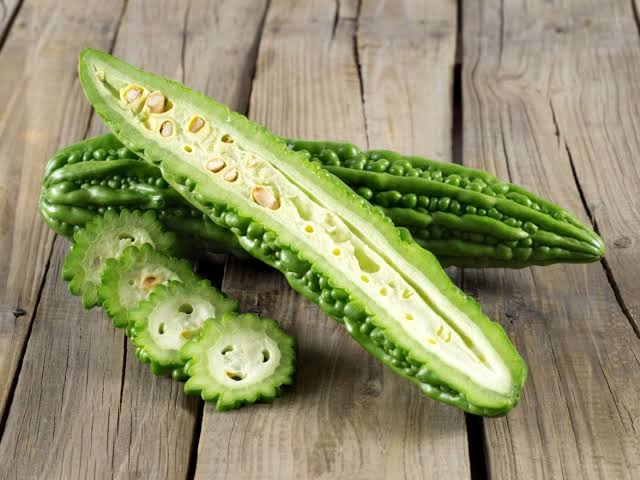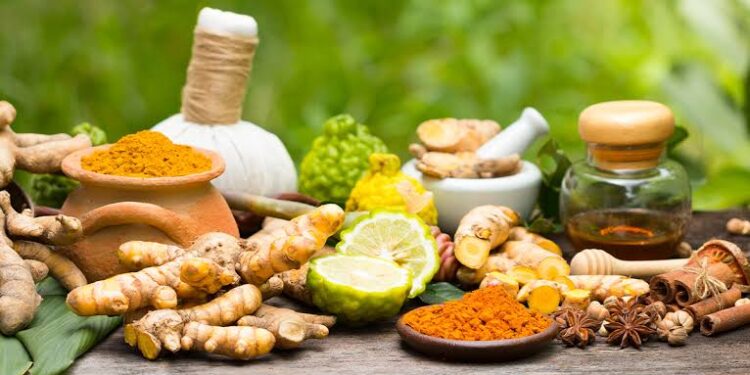Ayurveda is well known for its extensive natural treatment options for illnesses and enhancing overall physical and mental wellness.
It goes far beyond simple chanting, yoga, the application of packs, and oil massage to address the psychological and physiological factors that contribute to the development of health issues.
Here we bring to you 10 ayurveda ingredients that have exceptional healing properties and you must look for these ingredients if you consider buying Ayurveda medicine.
1. Ashwagandha
Ashwagandha, sometimes referred to as Indian ginseng, is a plant utilised in Ayurveda, the Indian system of traditional medicine. Its root has a smell of horses, and it is said to give users a horse’s virility and power. Ashva means “horse” and gandha means “smell” in Sanskrit. Although the plant has many uses, an extract of its roots is the most widely used supplement.
In ayurvedic medicine ashwagandha has been called rasayana which means that it helps in maintaining youth both mentally and physically.

Ashwagandha is used to treat the following conditions:
stress, anxiety, exhaustion, and ailments of the skin and diabetes
The leaves, seeds, and fruit of the plant are among the parts used in various therapies.
Ashwagandha may also improve memory, male fertility, muscle growth, and blood sugar levels, according to research. Larger trials, though, are required to substantiate these advantages.
In the West, this herb is becoming more well-liked. Today, Americans can purchase ashwagandha as a supplement.
2. Brahmi
Ayurvedic doctors in India employ the herb brahmi, also known as Bacopa monnieri. It features delicate stalks with tiny white flowers and oval, bright green leaves. It thrives in wet and swampy environments.
Antioxidants defend against the oxidative stress, often known as cell damage, brought on by free radicals. Heart, cancer, arthritis, stroke, respiratory illnesses, immune system deficiencies, and other inflammatory problems have all been related to oxidative stress.

Brahmi shields us from a wide range of illnesses affecting various organ systems.
Our bodies’ natural defence against potentially invasive foreign illnesses is inflammation. Chronic inflammation is sometimes associated with major conditions like diabetes, cancer, and heart disease. Brahmi has a number of advantages, one of which may be that it has anti-inflammatory properties.
3. Boswellia
Boswellia extracted from the serrata tree is the source of the herbal extract known as boswellia, also referred to as Indian frankincense.
In traditional Asian and African medicine, resin prepared from boswellia extract has been used for millennia. It’s thought to address a variety of other medical disorders as well as chronic inflammatory diseases. Boswellia is offered as a cream, tablet, or resin.

According to studies, boswellia may help treat the following disorders by reducing inflammation:
- osteoarthritis (OA)
- arthritis rheumatoid (RA)
- asthma
- inflammation of the colon (IBD)
Boswellia is a potent anti-inflammatory, making it a potent painkiller and perhaps preventing cartilage loss. It may even be helpful in treating some diseases, including leukaemia and breast cancer, according to several studies.
4. Amla
Amla is typically referred to as an Indian gooseberry, amla Because of their therapeutic qualities, the berries of the trees are powerfully utilised in pharmaceutical preparations. Small, spherical, yellowish-green berries that are found on amla trees are present.
It should be described as a superfood because of its many health advantages. The Amla is referred to by various names in classical Ayurveda, including sour, nurse, immortality, and mother.

Amla has five distinct flavours, including pungent, astringent, sweet, bitter, and sour. In addition to this, it promotes better physical and mental health.
Amla is rich in antioxidants and a great source of vitamin C which helps in reducing hypertension and stress. It also helps in weight loss and digestion, additionally amla is considered very useful for maintaining good health of your hair and amla oil is one of the most preferred for that.
5. Triphala
Amla, bibhitaki, and haritaki are the three Ayurvedic spices that make up the Ayurvedic treatment known as triphala. It might aid in easing joint discomfort, enhancing digestion, and supporting oral health.
Triphala may lessen arthritis-related inflammation as well as slow or stop the spread of some cancers.

It might also act as a natural laxative, helping those with gastrointestinal issues have more frequent and regular bowel motions while also lessening their discomfort, flatulence, and constipation.
A mouthwash containing triphala may also lessen plaque formation, lessen gum irritation, and prevent the development of bacteria in the mouth, according to a small number of studies.
6.Turmeric
The turmeric plant yields the spice known as turmeric. It is frequently used in Asian cuisine. The primary spice in curry, as you are already aware, is turmeric. Curry powders, mustards, butters, and cheeses are typically flavoured with or coloured with this heated, bitter ingredient. But turmeric roots are also frequently used to manufacture medicines. It includes curcumin, a substance with a yellow hue that is frequently used to give foods and cosmetics their colour.

For conditions like rheumatoid arthritis, Crohn’s disease, ulcerative colitis, stomach pain from surgery, haemorrhage, diarrhoea, intestinal gas, stomach bloating, loss of appetite, jaundice, liver issues, gallbladder issues, high cholesterol, radiation-induced skin inflammation, and fatigue, turmeric is used.
7. Gotu Kola
Gotu kola (Centella asiatica), a type of leafy plant, has a long history of use in both traditional Chinese medicine and Ayurvedic medicine. Gotu kola is traditionally used in Asian cuisines. It is a perennial plant that is native to Southeast Asia’s tropical wetlands, where it is frequently consumed as a juice, tea, or green leafy vegetable.

For its antibacterial, anti-diabetic, anti-inflammatory, antidepressant, and memory-improving qualities, gotu kola has been employed. It is frequently marketed as a nutritional supplement and is available as a tincture, topical cream, powder, and capsule.
Additionally, there is some evidence to suggest that the herb may lessen the signs of eczema and psoriasis as well as minimise varicose veins, stretch marks, and wound healing time.
8. Cardamom
Since its inception, Ayurvedic medicine has utilised cardamom, sometimes known as the “queen of spices” (Elettaria cardamomum).
According to research, cardamom powder may assist persons with high blood pressure to lower it. There is evidence that breathing cardamom essential oil while exercising may boost the amount of oxygen the lungs can absorb.

Cardamom might have antibacterial, anti-inflammatory, and antioxidant effects. It might aid in defending your heart against excessive blood pressure and raised cholesterol levels. It might also lessen liver damage and aid in the control of diabetes. Additionally, it can be used as a carminative for intestinal issues. Cavities and foul breath are two oral health issues that it helps treat.
9. Bitter melon
The vine known as bitter melon (Momordica charantia) is native to Asia, namely India. Diabetes has typically been treated using it.
A substance in bitter melon functions like insulin to help lower blood sugar levels.

Bitter melon is frequently used by people to treat ailments including diabetes, osteoarthritis, poor sports performance, and many more, however there isn’t any solid scientific proof to back these claims.
10. Cumin
One of the most well-liked spices, cumin is frequently used in a variety of cuisines, including those from Latin America, the Middle East, North Africa, and India. Both whole seeds and ground versions are available.

Numerous plant substances with proven potential health advantages, including flavonoids, alkaloids, phenols, and others, may be present in cumin seeds. These antioxidants can lessen the harm that free radicals, which produce oxidative stress and can seriously lead to heart blockages, diabetes, and other illnesses, do to the body.
























